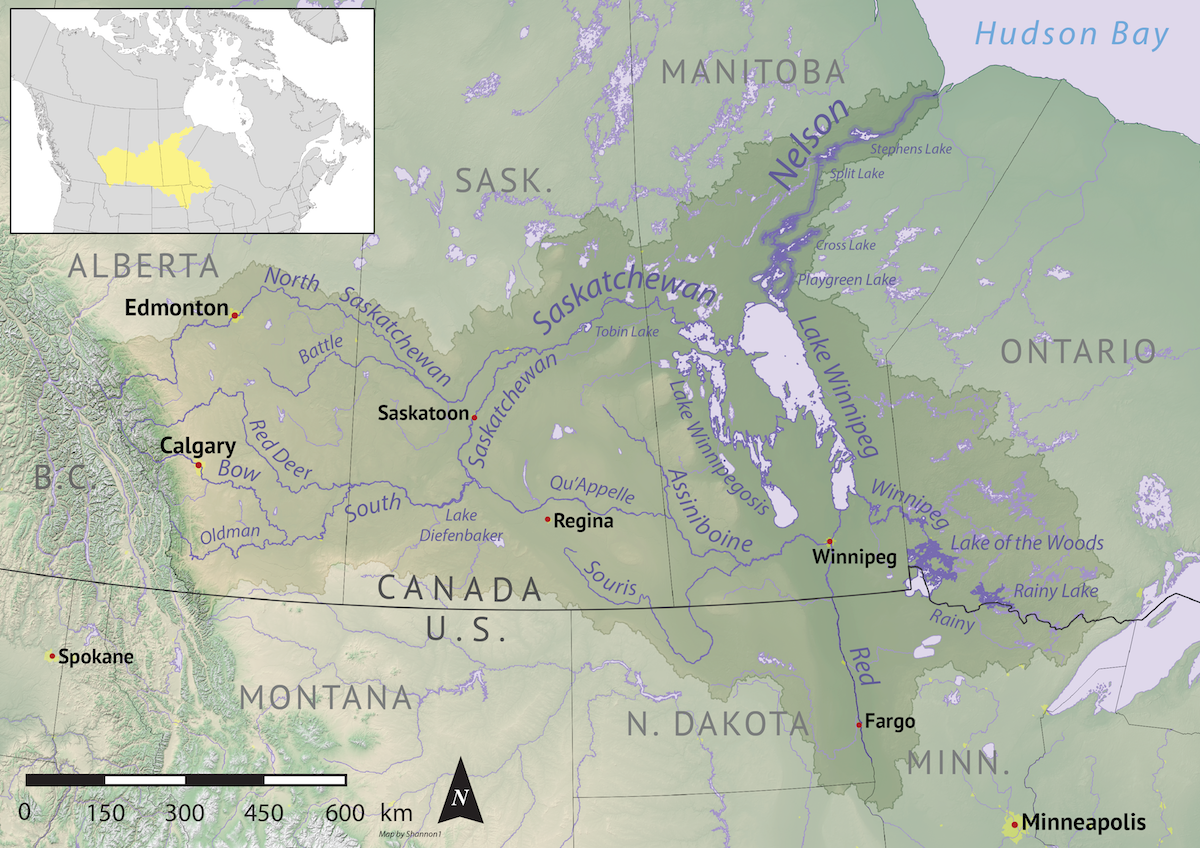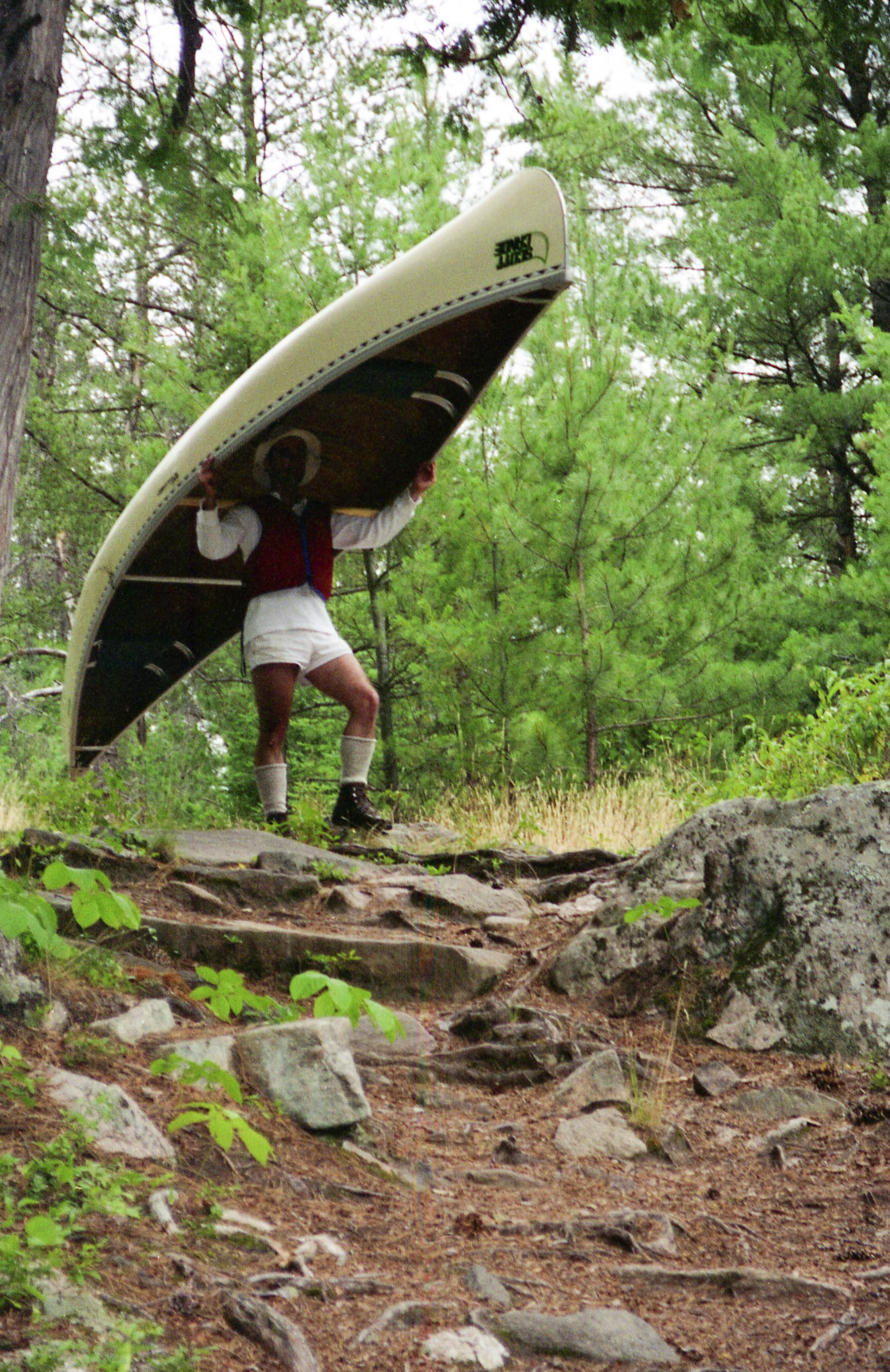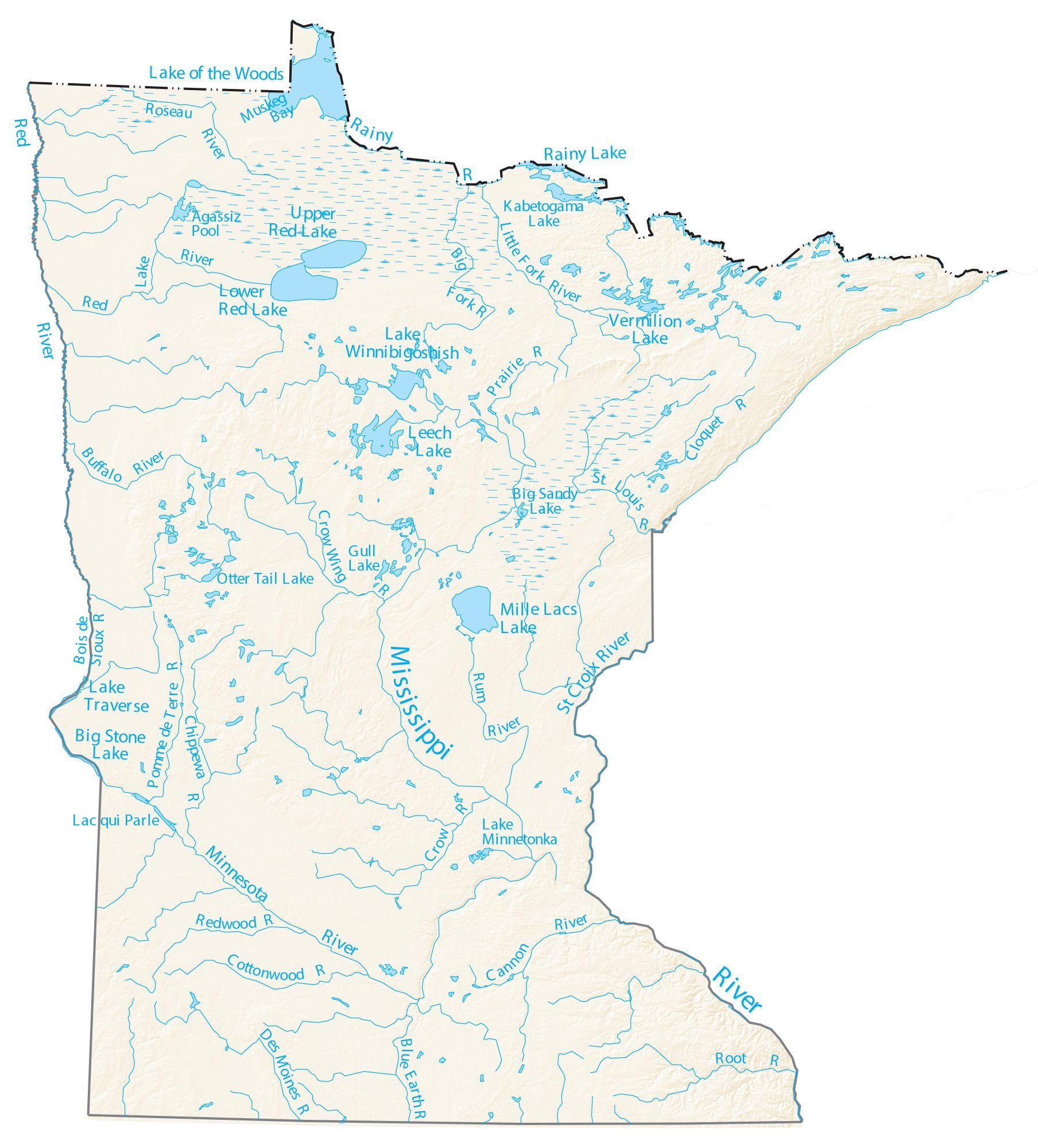|
Vermilion River (Minnesota)
The Vermilion River is located in Saint Louis County of northeast Minnesota, flowing between Crane Lake and Dago Bay of Lake Vermilion near Vermilion Dam. The Vermilion River's width varies considerably, being the size of a large creek in places and looking like a large lake in another. The Vermilion River passes through the community of Buyck in Portage Township. As its name suggests, the waters of the Vermilion are a brownish-red color. The murky waters and the over-abundance of leeches make the Vermilion an undesirable swimming destination. Forests around the Vermilion, being logged about 50 years ago, are thick and hard to penetrate as many competing trees are closely spaced. See also *List of rivers of Minnesota Minnesota has 6,564 natural rivers and streams that cumulatively flow for . The Mississippi River begins its journey from its headwaters at Lake Itasca and crosses the Iowa border downstream. It is joined by the Minnesota River at Fort Snel ... * ... [...More Info...] [...Related Items...] OR: [Wikipedia] [Google] [Baidu] |
United States
The United States of America (USA), also known as the United States (U.S.) or America, is a country primarily located in North America. It is a federal republic of 50 U.S. state, states and a federal capital district, Washington, D.C. The 48 contiguous states border Canada to the north and Mexico to the south, with the semi-exclave of Alaska in the northwest and the archipelago of Hawaii in the Pacific Ocean. The United States asserts sovereignty over five Territories of the United States, major island territories and United States Minor Outlying Islands, various uninhabited islands in Oceania and the Caribbean. It is a megadiverse country, with the world's List of countries and dependencies by area, third-largest land area and List of countries and dependencies by population, third-largest population, exceeding 340 million. Its three Metropolitan statistical areas by population, largest metropolitan areas are New York metropolitan area, New York, Greater Los Angeles, Los Angel ... [...More Info...] [...Related Items...] OR: [Wikipedia] [Google] [Baidu] |
Minnesota
Minnesota ( ) is a U.S. state, state in the Upper Midwestern region of the United States. It is bordered by the Canadian provinces of Manitoba and Ontario to the north and east and by the U.S. states of Wisconsin to the east, Iowa to the south, and North Dakota and South Dakota to the west. It is the List of U.S. states and territories by area, 12th-largest U.S. state in area and the List of U.S. states and territories by population, 22nd-most populous, with about 5.8 million residents. Minnesota is known as the "Land of 10,000 Lakes"; it has 14,420 bodies of fresh water covering at least ten acres each. Roughly a third of the state is Forest cover by state and territory in the United States, forested. Much of the remainder is prairie and farmland. More than 60% of Minnesotans (about 3.71 million) live in the Minneapolis–Saint Paul metropolitan area, known as the "Twin Cities", which is Minnesota's main Politics of Minnesota, political, Economy of Minnesota, economic, and C ... [...More Info...] [...Related Items...] OR: [Wikipedia] [Google] [Baidu] |
Lake Vermilion
Lake Vermilion is a shallow freshwater lake in northeastern Minnesota, United States. The Ojibwe originally called the lake Onamanii-zaaga'iganiing (occasionally anglicized as Nee-Man-Nee), which means “the evening sun tinting the water a reddish color”. French fur traders translated this to the Latin word ''Vermilion'', which is a red pigment. Lake Vermilion is located between the towns of Tower on the east and Cook on the west, in the heart of Minnesota's Arrowhead Region at Vermilion Iron Range. The area was mined from the late 19th century until the 1960s, and the Soudan Mine operated just south of the lake. The lake contains black crappie, bluegill, brown bullhead, largemouth bass, muskellunge (muskie), northern pike, pumpkinseed (sunfish), rock bass, smallmouth bass, tullibee (cisco), walleye, white sucker, and yellow perch. Lake Vermilion is known for its walleye and muskie fishing. In the spring of 2005, Lake Vermilion was host to the annual Minnesota Governo ... [...More Info...] [...Related Items...] OR: [Wikipedia] [Google] [Baidu] |
Crane Lake
Crane or cranes may refer to: Common meanings * Crane (bird), a large, long-necked bird * Crane (machine), industrial machinery for lifting ** Crane (rail), a crane suited for use on railroads People and fictional characters * Crane (surname), including a list of people and fictional characters with the surname * Crane (given name), a list of people Places Barbados * The Crane, Saint Philip, Barbados United Kingdom * River Crane, Dorset * River Crane, London, a small river of London, branch to the Thames ** Crane (ward), an former electoral ward of Hillingdon London Borough Council that existed from 1978 to 2002 United States * Crane, Indiana, a town * Crane, Missouri, a town * Crane, Montana, a census-designated place and unincorporated community * Crane, Oregon, a census-designated place and unincorporated community * Crane County, Texas ** Crane, Texas, a city and the county seat * Crane, Virginia, an unincorporated community * Crane, Washington, an unincorporated comm ... [...More Info...] [...Related Items...] OR: [Wikipedia] [Google] [Baidu] |
Rainy River (Minnesota–Ontario)
The Rainy River (; ) is a river, approximately long, forming part of the Canada–United States border separating Northwestern Ontario and northern Minnesota. History The river issues from the west side of Rainy Lake (French: ''lac à la Pluie''; Ojibwe: ''Gojiji-zaaga'igan'') and flows generally west-northwest, between International Falls, Minnesota, and Fort Frances, Ontario, and between Baudette, Minnesota, and Rainy River, Ontario. The Couchiching First Nation (the Ojibwe name spelled in transliterated form) is associated with this river, where it had traditional territory. The name of Koochiching County, Minnesota was derived from the Ojibwe term. Rainy Lake and the river were named by French colonists. These names were translated and adopted into English by British colonists. The town of Rainy River, Ontario was not developed until the late 19th century and not named until the early 20th century. The river enters the southern end of Lake of the Woods approximatel ... [...More Info...] [...Related Items...] OR: [Wikipedia] [Google] [Baidu] |
Crane Lake, Minnesota
Crane Lake is an unincorporated community in Crane Lake Township, Saint Louis County, Minnesota, United States; located within the Kabetogama State Forest. Crane Lake is situated at the southern entry to the Voyageurs National Park; the western entry to the Boundary Waters Canoe Area Wilderness; and an entry into Canada. The community serves as a vital entry point to a vast network of interconnected lakes, forests, and protected wilderness areas. With a year-round population of fewer than 100 residents, Crane Lake is notable for its remoteness, natural beauty, and role as a base for outdoor recreation in northern Minnesota. The area is popular among anglers, boaters, snowmobilers, and wilderness travelers, with numerous resorts, outfitters, and seasonal cabins lining its shores. Crane Lake is also the southern terminus of the Voyageur Highway, a historic water route once used by fur traders and early explorers. Today, it remains a central launch point for multi-day expeditions ... [...More Info...] [...Related Items...] OR: [Wikipedia] [Google] [Baidu] |
Vermilion Dam, Minnesota
Vermilion Dam is an unincorporated community in Saint Louis County, Minnesota, United States. The community is located 21 miles northeast of Cook, near the junction of Saint Louis County Road 24 and County Road 422. Vermilion Dam is located within the Kabetogama State Forest The Kabetogama State Forest is a state forest located in Koochiching and Saint Louis counties, Minnesota, United States. The forest borders the Superior National Forest and the Boundary Waters Canoe Area Wilderness to the east, the Sturgeon R .... References * Official State of Minnesota Highway Map – 2011/2012 edition Unincorporated communities in Minnesota Unincorporated communities in St. Louis County, Minnesota {{StLouisCountyMN-geo-stub ... [...More Info...] [...Related Items...] OR: [Wikipedia] [Google] [Baidu] |
Buyck, Minnesota
Buyck is an unincorporated community in Portage Township, Saint Louis County, Minnesota, United States. The community is located 16 miles east of Orr at the junction of Saint Louis County Road 23 (Orr–Buyck Road) and County Road 24 (Crane Lake Road). Buyck is also located 34 miles northeast of Cook. Buyck is located on the edge of the Kabetogama State Forest The Kabetogama State Forest is a state forest located in Koochiching and Saint Louis counties, Minnesota, United States. The forest borders the Superior National Forest and the Boundary Waters Canoe Area Wilderness to the east, the Sturgeon R .... The Vermilion River flows through the community. The first settlement is believed to be accompanying the gold-rush led settlement. Whilst first trades in town were parsemonious, the later development of the town brought school and church services. A post office called Buyck was established in 1913, and remained in operation until 1963. The community was named for ... [...More Info...] [...Related Items...] OR: [Wikipedia] [Google] [Baidu] |
Portage Township, St
Portage or portaging (Canadian English, CA: ; ) is the practice of carrying water craft or cargo over land, either around an obstacle in a river, or between two bodies of water. A path where items are regularly carried between bodies of water is also called a ''portage.'' The term comes from French, where means "to carry", as in "portable". In Canada, the term "carrying-place" was sometimes used. Early French explorers in New France and Louisiana (New France), French Louisiana encountered many rapids and Fan waterfalls, cascades. The Indigenous peoples of the Americas, Native Americans carried their canoes over land to avoid river obstacles. Over time, important portages were sometimes provided with canals with canal lock, locks, and even portage railways. Primitive portaging generally involves carrying the vessel and its contents across the portage in multiple trips. Small canoes can be portaged by carrying them inverted over one's shoulders and the center thwart, strut may be ... [...More Info...] [...Related Items...] OR: [Wikipedia] [Google] [Baidu] |
List Of Rivers Of Minnesota
Minnesota has 6,564 natural rivers and streams that cumulatively flow for . The Mississippi River begins its journey from its headwaters at Lake Itasca and crosses the Iowa border downstream. It is joined by the Minnesota River at Fort Snelling, by the St. Croix River near Hastings, by the Chippewa River at Wabasha, and by many smaller streams. The Red River, in the bed of glacial Lake Agassiz, drains the northwest part of the state northward toward Canada's Hudson Bay. By drainage basin (watershed) This list is arranged by drainage basin with respective tributaries indented under each larger stream's name.Note: In North America, the term watershed is commonly used to mean a drainage basin, though in other English-speaking countries, it is used only in its original sense, that of a drainage divide. The rivers and streams that flow through other states or Minnesota and other states are indicated, as well as the length of major rivers. Great Lakes drainage basin La ... [...More Info...] [...Related Items...] OR: [Wikipedia] [Google] [Baidu] |
List Of Longest Streams Of Minnesota
Out of the 6,564 streams that flow through the U.S. State of Minnesota, there are 114 streams that are at least 30 miles long. The second longest river in the United States, the Mississippi River, originates in Minnesota before flowing south to the Gulf of Mexico. The longest river entirely within the state of Minnesota is the Minnesota River. Other rivers over 200 miles long include the Red River of the North, Des Moines River, Cedar River (Iowa River tributary), Cedar River, Wapsipinicon River, Little Sioux River, and Roseau River (Manitoba–Minnesota), Roseau River. Sections of several of the longest rivers define sections of the Minnesota border. The Red River of the North forms the border with North Dakota to the west. The Bois de Sioux River forms the border with South Dakota to the west. The Mississippi River, St. Croix River (Wisconsin-Minnesota), St. Croix River, and the Saint Louis River (Lake Superior tributary), St. Louis River form the border with Wisconsin ... [...More Info...] [...Related Items...] OR: [Wikipedia] [Google] [Baidu] |
Rivers Of Minnesota
Minnesota has 6,564 natural rivers and streams that cumulatively flow for . The Mississippi River begins its journey from its headwaters at Lake Itasca and crosses the Iowa border downstream. It is joined by the Minnesota River at Fort Snelling, Minnesota, Fort Snelling, by the St. Croix River (Wisconsin-Minnesota), St. Croix River near Hastings, Minnesota, Hastings, by the Chippewa River (Wisconsin), Chippewa River at Wabasha, MN, Wabasha, and by many smaller streams. The Red River of the North, Red River, in the bed of glacial Lake Agassiz, drains the northwest part of the state northward toward Canada's Hudson Bay. By drainage basin (watershed) This list is arranged by drainage basin with respective tributaries indented under each larger stream's name.Note: In North America, the term watershed is commonly used to mean a drainage basin, though in other English-speaking countries, it is used only in its original sense, that of a drainage divide. The rivers and streams that f ... [...More Info...] [...Related Items...] OR: [Wikipedia] [Google] [Baidu] |



